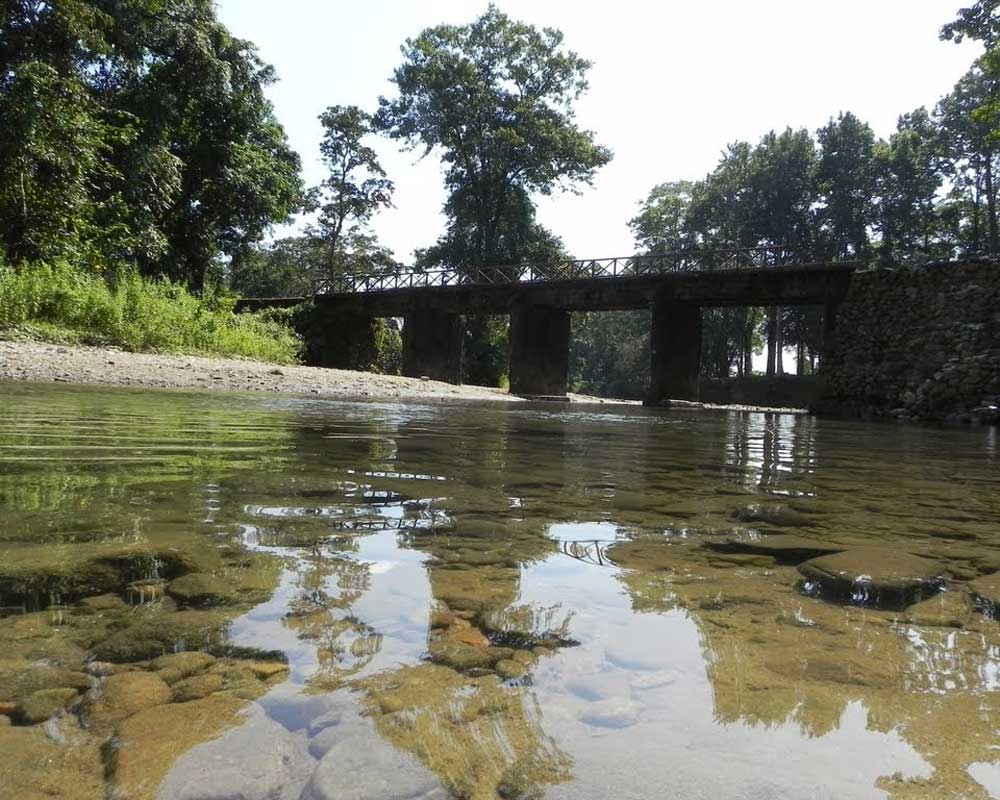 Jaldapara National Park Landscape
Jaldapara National Park Landscape
Jaldapara National Park Landscape Nestled amidst the picturesque Eastern Himalayas in the state of West Bengal, India, Jaldapara National Park boasts a mesmerizing landscape that attracts travelers and wildlife enthusiasts from far and wide. Spanning across approximately 216.51 square kilometers, this national park is renowned for its diverse topography, ranging from lush forests to expansive grasslands, offering a haven for a myriad of flora and fauna.
The Jaldapara National Park covers 216 sq km, is a mosaic of woods, grasslands, perennial streams, sandy river banks and extensive belts of tall grass. It contains a great diversity of flora and fauna of mixed deciduous forest, grasslands and river banks.
The Malangi River also flows nearby from east to west. Drained by rivers Torsa, Malangi, Hollong, Chirakhawa, Kalijhora, Sissamara, Bhaluka and Buri Torsa, the Sanctuary provides extensive grassland which is last refuge to a wide variety of mammals, amphibians, reptiles and birds.
The Enchanting Forests:
-
Sal Forests (Shorea robusta):
- Dominating the landscape, these dense forests are home to a variety of wildlife.
- Towering sal trees create a majestic canopy, providing shade and shelter.
- Offers a serene environment for nature walks and birdwatching.
-
Mixed Deciduous Forests:
- Comprising a blend of deciduous trees like teak, bamboo, and mahogany.
- Rich biodiversity attracts numerous avian species and small mammals.
- Perfect for adventurous jungle safaris and wildlife spotting.
Expansive Grasslands:
-
Vast Open Meadows:
- Rolling expanses of grasslands interspersed with scattered trees and shrubs.
- Ideal habitat for herbivores like Indian rhinoceros, elephants, and deer.
- Offers breathtaking vistas and opportunities for wildlife photography.
-
Riverine Landscapes:
- Tranquil riverbanks of Torsa and Malangi rivers enhance the park’s beauty.
- Riparian vegetation flourishes along the water bodies, attracting diverse birdlife.
- Serene spots for picnics, nature walks, and birdwatching.
Wetlands and Marshes:
-
Oxbow Lakes:
- Scenic lakes formed due to the meandering course of rivers.
- Serve as crucial habitats for aquatic species and migratory birds.
- Birdwatchers’ paradise offering glimpses of rare and endangered species.
-
Swamps and Marshy Areas:
- Teeming with aquatic life forms like fish, amphibians, and reptiles.
- Provide nesting and breeding grounds for waterfowl and wading birds.
- Educational sites for studying wetland ecosystems and biodiversity.
Hills and Plateaus:
-
Elevated Terrain:
- Scattered hillocks and plateaus add a rugged charm to the landscape.
- Offers panoramic views of the surrounding wilderness and river valleys.
- Ideal for trekking, camping, and nature trails amidst pristine surroundings.
The nearby Chilapata Forests is an elephant corridor between Jaldapara National Park Landscape and the Buxa Tiger Reserve Near by is the Gorumara National Park, known for its large population of Elephants.
Due to ever growing Elephant population in the regions in and around Jaldapara, large herds of Elephants are often seen roaming around in the area.
Drained by rivers Torsa, Malangi, Hollong, Chirakhawa, Kalijhora, Sissamara, Bhaluka, and Buri Torsa, the Sanctuary provides extensive grassland which is the last refuge to a wide variety of mammals, amphibians, reptiles, and birds.
You can book your next stay at Jaldapara through the Official Website of Govt. of West Bengal.
